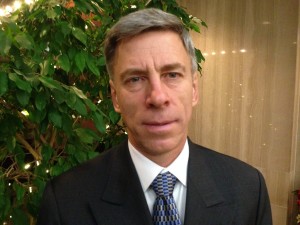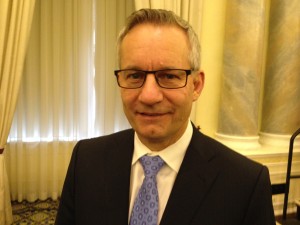Category Archives: Carleton assignments
Reaping what they sow — the downfall of the Canadian farmer
For my data research and manipulation, please see the following link:
Test Post Rory MacDonald-Gauthier
This is a test Molly Hanzidiakou
Testing, testing – Michael Timmermans
Urban suburban divide may not help Ford get re-elected

While Rob Ford’s election exposed a deep divide in the way Torontonians vote, the embattled mayor may be overestimating the ability of his Ford Nation to get him re-elected.
“We have seen public attitudes about scandal change over the past 10-15 years, and we have seen a number of candidates who have been involved with a number of person foillibles pick themselves up and manage to get back in the game,” said Dennis Pilon, a York University political science professor.
Pilon says a lot of public perception around scandal depends on what the scandal is about, and how the candidate deals with the scandal.
“If it’s not clear that the politician is contrite, or they have a plan for dealing with their problem, then I think the public is willing to be an enabler,” Pilon said. “And there I think Rob Ford has not handled this as well as some other politicians.”
But Ford has always been a less-than politically correct character. He was frequently in the news as a bumbling mayoral candidate, making controversial statements and finally winning in an election that saw a giant split in the way Toronto’s downtown and inner suburbs voted.
Observers at the time said that Ford’s election victory showed how divided Toronto was. Several towns around the downtown core were amalgamated in 1998 to form the modern day City of Toronto.
However, the new amalgamated city does not seem to think as one. Here’s a map that shows how Toronto voted for Rob Ford in the last election. The boundaries of the former cities that made up the Toronto area are shown, and the darker the shade, the stronger the support Ford had in that area:
It’s clear that Ford received most of his support from the inner suburbs, while the downtown or ‘Old Toronto’ seemed to be opposed to him.
Pilon says that demographics in the inner suburbs may hold some clues as to why they voted differently from the downtown core.
“What we might be seeing in the suburbs is an older group of more entrenched citizens who feel very threatened by the rate of change in their communities,” Pilon said.
“So they’re seeing wave upon wave of immigrants moving into their neighbourhood and part of what’s happening with Ford Nation is a reaction to that.”
Pilon thinks that there may not be a significant entrenched divide between the inner suburbs and the downtown, as the elections may suggest. He pointed to the previous mayor, David Miller, who received more widespread support, and said that various factors like voter turnout and specific issues could affect election outcomes.
“We could speculate that things like the garbage strike, that had happened in the year before the election, that made a lot of people angry, and it probably motivated a lot of people to vote who wouldn’t normally vote in a municipal election,” Pilon said.
“Municipal elections, hard to get people’s attention. But hey, there’s garbage rotting at their doorsteps, so they were motivated.”
Pilon said he doubts those same people will be motivated in the next election – and here he draws a line between the “Ford Nation” and other voters who might have supported Ford, but did not necessarily constitute his dedicated Nation.
“It’s very important to distinguish between the Ford Nation supporters, who are a very particular populist demographic, and the kind of run-of-the-mill right-wing supporters,” he said.
Pilon said that while a lot of people voted for him simply because he was the right-wing candidates, and while they may have supported his policies and approved his budget cuts, they may not be as forgiving of his scandals.
“Even if he keeps his Ford Nation behind him, it won’t be enough for him to win,” Pilon said.
It’s a thought echoed by Nelson Wiseman, a political science expert at the University of Toronto. He says that a large part of Ford’s support was probably because he was the only major candidate from the inner suburbs, while the downtown had several candidates from there.
“If only 750,000 people live downtown and two million people live in the suburbs, and only one guy is running from the suburbs, and his house looks more like their own house, a lot of those people will identify with him,” Wiseman said.
He drew comparisons with similar situations in other Canadian cities, like Winnipeg and Ottawa.
“I don’t think the people who live in, say, Kanata vote the same way as people in Bytown,” Wiseman said, talking about suburban and downtown Ottawa.
“People like to focus on Rob Ford as a kind of lightning bolt that attracts all this energy, when I think what we see here is a series of unfortunate events, or fortunate, depending on your point of view, that then ultimately result in him becoming the mayor,” Pilon said.
Bahrain, Algeria, Iraq among new customers of Canadian guns, ammunition
Bahrain, Algeria and Iraq recently became some of Canada’s newest customers of guns and ammunition despite their dubious human rights records or violent internal conflicts.
An analysis of federal government data has found that Canadian exports to those countries swelled by 100 per cent from 2011 to 2012, the most recent figures publicly available.
In that same time period, Canadian weapons’ exports also increased to Pakistan (98 per cent), Mexico (93 per cent) and Egypt (83 per cent). Respectively, those three countries face violent threats from al-Qaida terrorists on their own soil, a deadly government war on drug cartels and seismic political upheaval.
Though Canada’s arms trade is legal and regulated, analysts say these figures raise questions about the government’s foreign policy commitment to human rights, and its regulatory regime for arms exports.
“Diversification is a principle of business in this globalized economy. As we see western militaries decrease their defence budgets, military industries will be looking for new markets,” said Walter Dorn, the chair of international affairs studies at the Canadian Forces College.

“The danger is that the almighty dollar may become the predominant motivator in trade deals and therefore weapons are more easily shipped.”
The Canadian Press provided a list of questions to the offices of International Trade Minister Ed Fast and Foreign Affairs Minister John Baird, but an emailed reply from Foreign Affairs left many of them unanswered.
Foreign Affairs carefully reviews all export of weapons to ensure they “do not contribute to national or regional conflicts or instability” or “are not used to commit human rights violations,” the statement said.
In all, an examination was conducted of 10 years of Industry Canada data on a class of exports that is made up of military weapons, guns and ammunition, along with howitzers, mortars, flame throwers, grenades and torpedoes. It does not include other big military equipment such as vehicles, aircraft and other advanced technology, which balloons Canada’s overall arms trade into the billions of dollars.
Last month, Fast announced that Canada was putting economic interests at the centre of its foreign policy. The shift to “economic diplomacy” is designed to increase trade and investment in emerging markets.
In 2012, Canadian weapons’ makers found some new customers, which offset a decline in sales to some major democratic allies.
Canada’s average annual exports in the sector averaged $257 million from 2003 to 2012, and increased four per cent in 2012 from 2011, to $251 million.
That modest 2012 increase came despite a noticeable drop in exports to traditional allies such as the United Kingdom (10 per cent), Italy (37 per cent), Netherlands (40 per cent), Belgium (87 per cent) and Spain (132 per cent).
Canada’s leading customer by a massive margin is the United States, where its annual exports have averaged $190 million over the last decade. Exports to the U.S. climbed nine per cent from 2011 to 2012, to $178 million, but that marked a drop from a high of $294.5 million in 2007 — also peak fighting periods in Iraq and Afghanistan.
Dorn said the numbers in question may be relatively small compared with Canada’s overall arms trade and the massive global industry, but they still raise a “red flag.”
That’s because Canada’s sales to Bahrain shot from zero in 2011 to $250,000 in 2012 while Algeria’s skyrocketed from $29 to $242,000, years in which both countries suppressed pro-democracy democratic protests, he said.
“It is really strange timing that Canada would be increasing a sale of arms or military equipment, let’s say, at this moment when Bahrain has been involved in violently repressing its own peaceful democracy demonstrators,” said Roland Paris, director of the Centre of International Policy Studies at the University of Ottawa.
Bahrain violently suppressed pro-democracy demonstrators in 2011 with the help of Saudi Arabian forces. Earlier this year in Algeria, a terrorist attack on a desert gas plant — two Canadians were among the militants — resulted in the deaths of 29 attackers and 37 hostages. Meanwhile, in Iraq, thousands have been killed this year in continuing violence.
Baird visited all three countries earlier this year, noting that Canada is seeking to make economic inroads with each.
Paris said Baird’s relative silence on the Bahrain crackdown in particular, “raises questions about the consistency of our policy and it suggests hypocrisy.”
Dorn said it is fair to ask — but harder to answer — whether weapons from Canada may have found their way into the hands of rights abusers, whether despotic governments, rebels or criminals.
“It would be shocking if Canada supplied arms to suppress a democratic movement,” he said.
“The Industry Canada data table doesn’t list the types of weapons that are sold. It doesn’t give any details so we are left to wonder what the weapons are.”
Dorn said Canada does what it can to prevent its arms from being diverted into the wrong hands by insisting that its customers sign end-user certificates that bar transfers. But the documents have been abused in the past, especially by some African countries.
“If people want to find a way, they will always find a way. You can’t have a foolproof system where no arms are diverted,” Angela Kane, the UN’s High Representative for Disarmament Affairs, said in an interview.
“It’s just insane . . . I also think about the humanitarian consequences. What are the arms used for?”

Dorn and Kane suggested Canada should stop its foot-dragging and sign the UN Arms Trade Treaty (ATT), an attempt to regulate the multi-billion dollar industry.
Dorn said the treaty would force Canada to tighten its export control regime on weapons.
“Our national controls used to be the best in the world, and we’ve seen a dilution of those national controls so that in some cases our controls won’t even meet the new international standard of the ATT.”
Paris said that fact that Canada has yet to sign the ATT “raises questions about whether Canada is drifting from being a leader to a laggard in arms control.”
Baird has said Canada wants to study whether the ATT would infringe the rights of domestic gun owners.
Kane said the treaty would not affect domestic gun ownership, anywhere.
Last month, when he announced Canada’s foreign policy shift, Fast said that he personally raises human rights concerns with his counterparts, but he declined to give specifics.
“Whenever we travel abroad, we raise issues of human rights wherever they may be appropriate.”

This is a test
Erika Stark Assignment 4
Downloading the government:
How Canada’s open data stacks up worldwide
By Erika Stark
The Canadian government’s open data initiatives rank among the top 10 countries worldwide, according to a recent report. But data experts and observers say that while the quantity of data made available by the federal government might look impressive, it still lacks a real impact on government accountability and transparency.
Open data: The practice that makes data freely available by way of portals, metadata, and search tools for reuse by governments, citizens, voluntary organizations, academia, and the private sector in new and unanticipated ways.
– source, data.gc.ca
Canada’s federal open data
The federal government relaunched its open data portal in June. Twenty-five government departments and agencies so far have datasets that are openly available through the portal. Of the 197,825 datasets available as of Oct. 31, 96 per cent are from Natural Resources Canada. The next highest number of datasets for a single department was the 5,396 from Statistics Canada. Thirteen departments, including Elections Canada, the Canada Revenue agency and Public Safety Canada, had less than 10 datasets each.
“The open data portal is a starting place,” said Jeff Sallot, a journalism instructor at Carleton University.
But Sallot said the portal still leaves a lot to be desired.
“I don’t want to dismiss it as window-dressing,” he continued. “I think that there’s a potential there and I applaud the government’s recognition of the importance of new, online ways for citizens for access government information.”
Tracey Lauriault, a postdoctoral researcher at the National Institute for Regional and Spatial Analysis in Maynooth, Ireland, said Canada can “do better.”

“Canada, overall, is doing very well on the open data front,” she said. “We’re a rich country, we’re very evolved with respect to information technology and we can do much better.”
Top ten in the world
The Open Data Barometer, a global report organized by the Open Data Institute and the Web Foundation, ranked and compared 77 countries, with Canada ranking eighth overall. (The U.K. and U.S. ranked first and second, respectively).
The report broke down the rankings into three main subcategories – readiness, implementation and impact. Canada scored 79 for on a 100-point scale for open data readiness, meaning the country’s “capacity to secure and sustain the full benefits of open data.”
For implementation, which focused on the kind of data available as well as how accessible it was, Canada scored 69. Lastly, the country received just 52 points for the potential impact its open government data could have on a range of things including accountability, entrepreneurial use and government efficiency.
In the report, Canada scored well for openness and availability of data relating to government spending, public transport timetables, election results and map data. Conversely, it ranked poorly on land ownership, government budget and legislation.
Open data, not open government
More access to open data doesn’t translate into a more open government in Canada, said Lauriault. She said the muzzling of government scientists, the cancellation of a long-form census, and the lack of a research data archive demonstrate the government’s lack of openness.
“The federal government has released a portal, but it is not an open government,” she said.
Sallot agreed, also pointing to the country’s outdated access to information legislation. “On politically sensitive pieces of information, the government is not forthcoming,” he said.
While it’s not a catch-all solution, Sallot said increased access to open data can improve openness and accountability within individual government departments.
“The default position of every agency that is funded in any way by government has to be for openness,” he says. “Digital data is so easy to put out there. There were some actual physical limitations on the whole process 30 years ago. That doesn’t exist anymore.”
“If you’re a government agency and you cannot locate your data, you’ve got a real problem.”
Cities leading the way in open data
While the federal government might be lagging behind many of its counterparts in its open data initiatives, Lauriault pointed to Canadian cities as the “champions” of open data. Approximately 37 cities, towns and municipalities across the country have some sort of open data portal.
Provincially, B.C., Alberta, Manitoba, Ontario, Quebec, New Brunswick, the Northwest Territories and Yukon also have open data sites. (Click here for a comprehensive list of government-led open data portals in Canada.)
SEE BELOW: Canadian municipalities with open data portals
(source: datalibre.ca and data.gc.ca)
“They came out the door first, they were the ones who did the first open data portals,” said Lauriault.
These smaller-scale data portals can be invaluable tools not only for researchers but for advocacy and community groups to make “evidence-based” arguments and decisions, says Bianca Wylie, the co-founder of the nascent Canadian Open Data Institute.

The institute’s mandate is to educate and connect stakeholders with open data in their communities. People looking for information on development permits, city planning or affordable housing might not call it “open data,” but usually, that’s what it is, Wylie said.
“To them, it’s just information,” she explained. “There are so many scales of what you consider data, a lot of the time it’s just information that’s sitting with the city. As an advocate, you want to make evidence-based arguments.”
While she applauded the federal and provincial governments and municipalities for their efforts, Lauriault said all levels of government still need to improve the kind of open data they provide.
“They’ve got some data, but they don’t have the hard stuff,” she said. “Do we fare well? I guess we do because we have lots of portals and lots of initiatives.”
“But are the really difficult data that we want available? No, they’re not.”

A “made in Canada” success story: Canada’s canola
An industry that doesn’t get a lot of press time is staking out a claim in the world market.
Canada’s estimated canola crop for 2013 is the highest ever, at nearly 16 million metric tonnes, according to study on production of principal crop yields released by Statistics Canada in September.
That’s on the back of exports that have tripled from 2001 to 2011, generating billions for the Canadian economy.
It’s the continuation of a long trend of near-continuous growth for the canola industry. Canada has important trading partners in Japan, China, Mexico and the United States.
Each trading partner has different needs. Japan and Mexico have a hunger for the canola seeds, since these imports support their seed-crushing and oil production industries at home. There is demand in China for canola meal, the high-protein by product of the crushing process that is used to feed livestock. And the U.S. imports both the oil and the meal for human and animal consumption.
Yet despite an existing industry that’s worth billions, the Canola Council of Canada is working to rectify what it sees as a modest share of the global market, about 20 per cent.
It’s been working with the Canadian government to follow through on what it call the Canola Market Access Plan, meant to break through existing impediments to grabbing a greater global market share.
Canola, an abbreviation of “Canadian oil,” is presented as one of Canada’s agricultural success stories.
The history of the important oilseed plant goes back to the first recorded crop yield 60 years ago. In World War II it was grown as an emergency measure when European supplies were cut off.
Canola, an abbreviation of “Canadian oil,” is presented as one of Canada’s agricultural success stories. Canola is mainly grown in three Prairies provinces – Manitoba, Saskatchewan, and Alberta.
It’s a selectively bred strain of rapeseed, a plant whose oil-rich seeds were used in industry as lubricants and flammables.
But the old rapeseed strain was undesirable for producing edible oil because of relatively high levels of euric and eicosenoic acids in rapeseed oil.
In the 1970s a team of researchers from Agriculture and Agri-Food Canada and the University of Manitoba used traditional plant breeding techniques to create a new plant, which they dubbed “canola” to differentiate it from the rapeseed strain.
A series of cross-breeding experiments in the 1960s and the 1970s resulted in a rapeseed plant without the undesirable acids and with a relatively low concentration of saturated fats.
“And so [they] developed over time, a very high-quality, high-yielding oil that has a considerable number of health qualities in terms of contributing to low cholesterol,” said Jan Dyer, Director of Government Relations at the Canadian Canola Growers Association.

